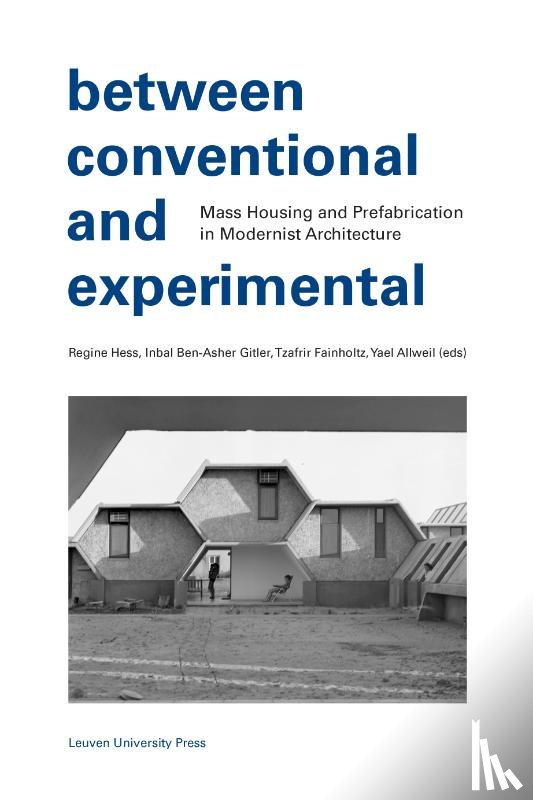Omschrijving
How conventional and experimental prototypes and series created an architecture for all Mass housing and prefabrication shaped global modernist architecture like no other aspect of industrialised construction. This book offers a comprehensive exploration of how both conventional and experimental prototypes and series gave rise to an architecture for all and responded to crises, nation-building, and housing shortages within the context of transnational and regional research.
The book’s contributions explore partially unearthed empirical ground, such as cases from Finland and Sweden, while others offer a fresh interpretation of prefabrication’s role in the history of global architecture, notably in the USSR and Italy. The chapters' topics encompass colonial expansion, class, international collaboration, and the achievements and setbacks of industrialised design. The authors scrutinise the cultural impact of mass housing and prefabrication, tracing this influence through exhibitions, memory culture, and typologies, ultimately concluding with an outlook on the preservation and repair of structures and their adaptation for the future. Mass housing and prefabrication shaped global modernist architecture like no other aspect of industrialised construction. This book offers a comprehensive exploration of how both conventional and experimental prototypes and series gave rise to an architecture for all and responded to crises, nation-building, and housing shortages within the context of transnational and regional research.
The book’s contributions explore partially unearthed empirical ground, such as cases from Finland and Sweden, while others offer a fresh interpretation of prefabrication’s role in the history of global architecture, notably in the USSR and Italy. The chapters' topics encompass colonial expansion, class, international collaboration, and the achievements and setbacks of industrialised design. The authors scrutinise the cultural impact of mass housing and prefabrication, tracing this influence through exhibitions, memory culture, and typologies, ultimately concluding with an outlook on the preservation and repair of structures and their adaptation for the future. Foreword
Acknowledgments
Introduction
Regine Hess, Inbal Ben-Asher Gitler, Tzafrir Fainholtz, and Yael Allweil
PART 1 — HOUSING AS ARCHITECTURE FOR ALL
Chapter 1. Toward a Democratic Architecture: Norwegian Experiments in Timber
Maryia Rusak
Chapter 2. Assembling a Home: Politics, Trauma, and the Finnish Export of Prefabricated Homes
Mia Åkerfelt, Tzafrir Fainholtz, and Anna Wilczyńska
Chapter 3. Prefabricating a Nation: The Neighborhood of Ramat HaNasi in Bat Yam, Israel, by Architect Yitzhaq Perlstein
Daphna Levine and Liat Savin Ben Shoshan
Chapter 4. The Reconstruction of Post-Earthquake Skopje: An International Collection of Prefabricated Houses in the Cold War Era
Tamara Bjažić Klarin
PART 2 — CONVENTIONAL AND EXPERIMENTAL IN NEW NEIGHBORHOODS
Chapter 5. Another Slab, Sheet, and Brick in the Wall: The Surge of Prefabrication in Israeli Housing, 1960–1980
Inbal Ben-Asher Gitler and Yael Allweil
Chapter 6. Massive Blocks for Soviet Mass Housing: Standardization and Prefabrication in the Soviet Union
Angelo Bertolazzi
Chapter 7. Thamesmead: Prefabrication between Utopia and Dystopia
Alberto Franchini
PART 3 — EXHIBITIONS AND PROTOTYPES: ARCHITECTURAL MEDIATION THROUGH PREFABRICATION
Chapter 8. Halls, “Huts,” and Houses: Large Exhibitions, Prefabrication, and Housing
Regine Hess
Chapter 9. The Milan Triennale Exhibitions and the Debate on Prefabrication in Postwar Italy
Ilaria Giannetti and Stefania Mornati
Chapter 10. The Living Cell Typology: Exploring Le Corbusier’s Vision through His Cabanon de vacances
Maria Tassopoulou
Afterword: How to Build? On the Handling of Existing and Newly Constructed Buildings
Silke Langenberg
References
Contributors
Index


